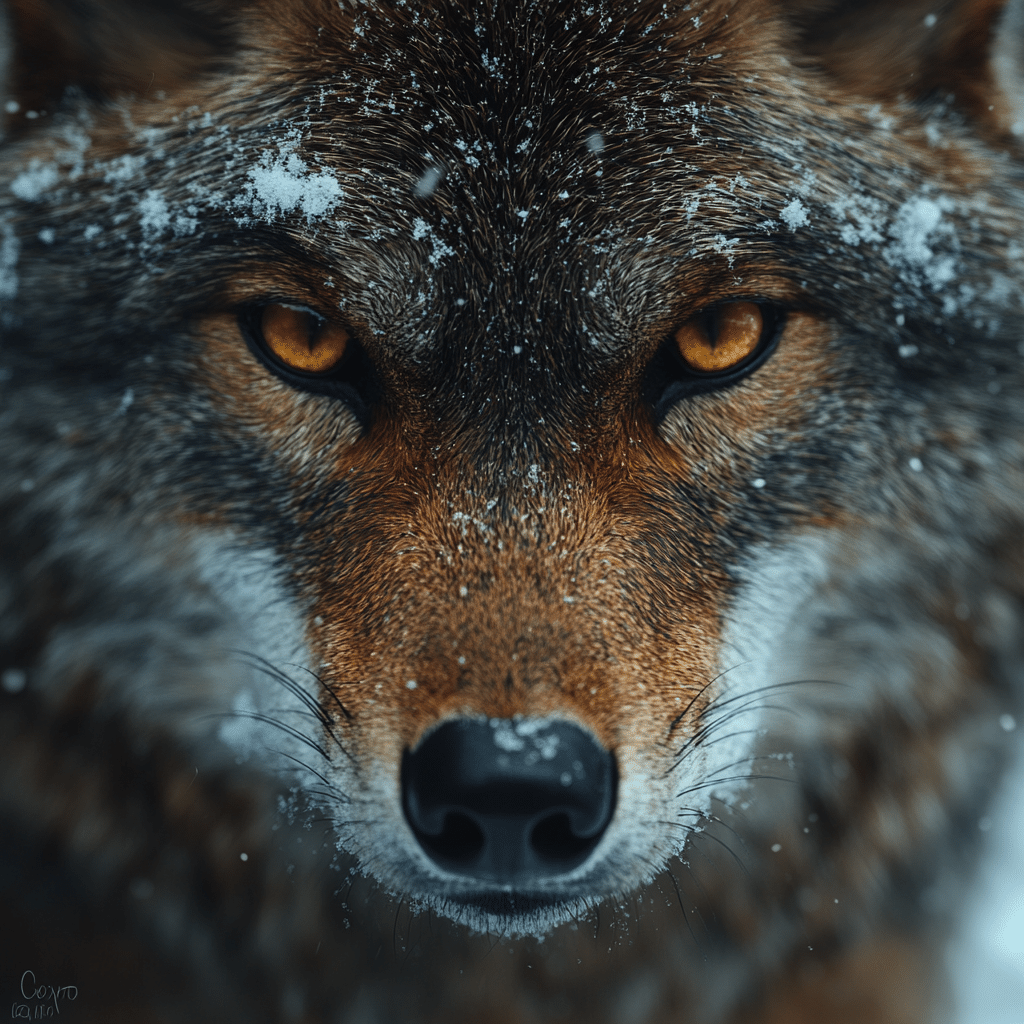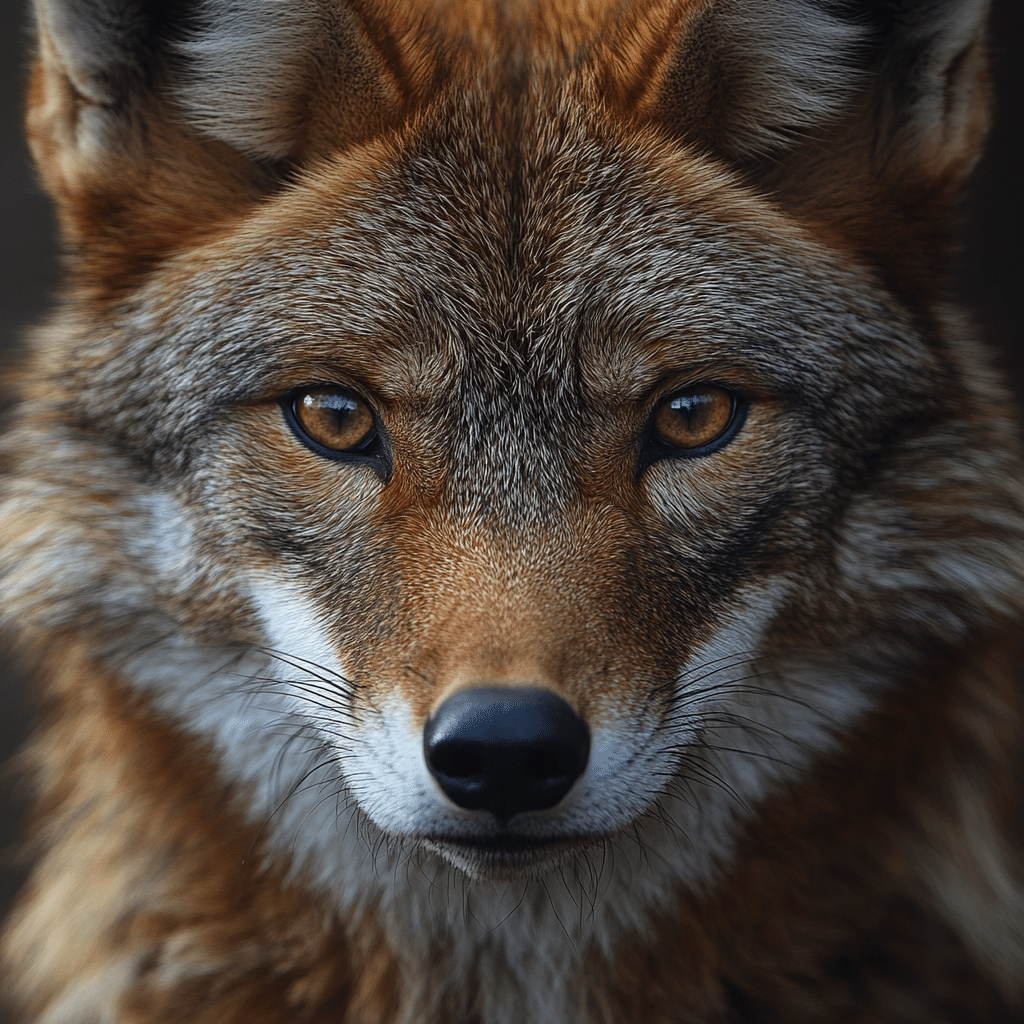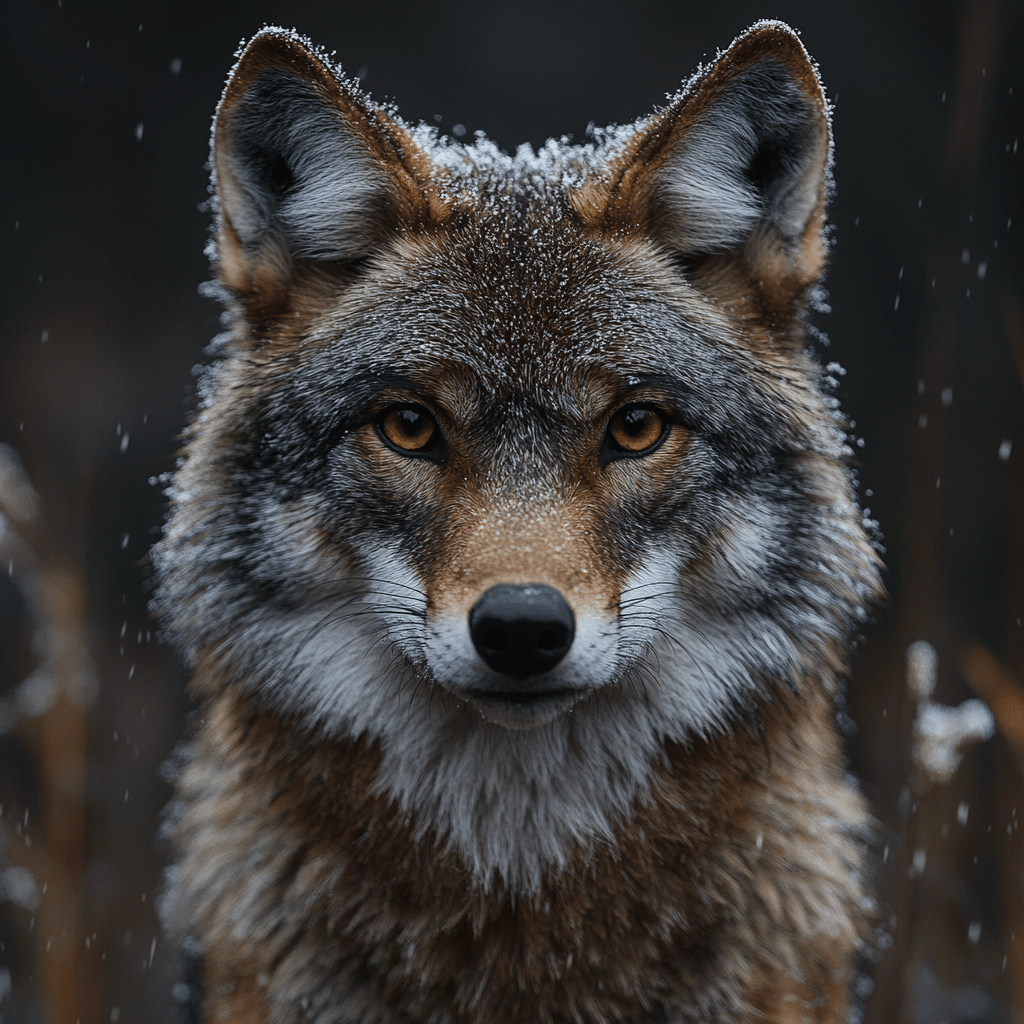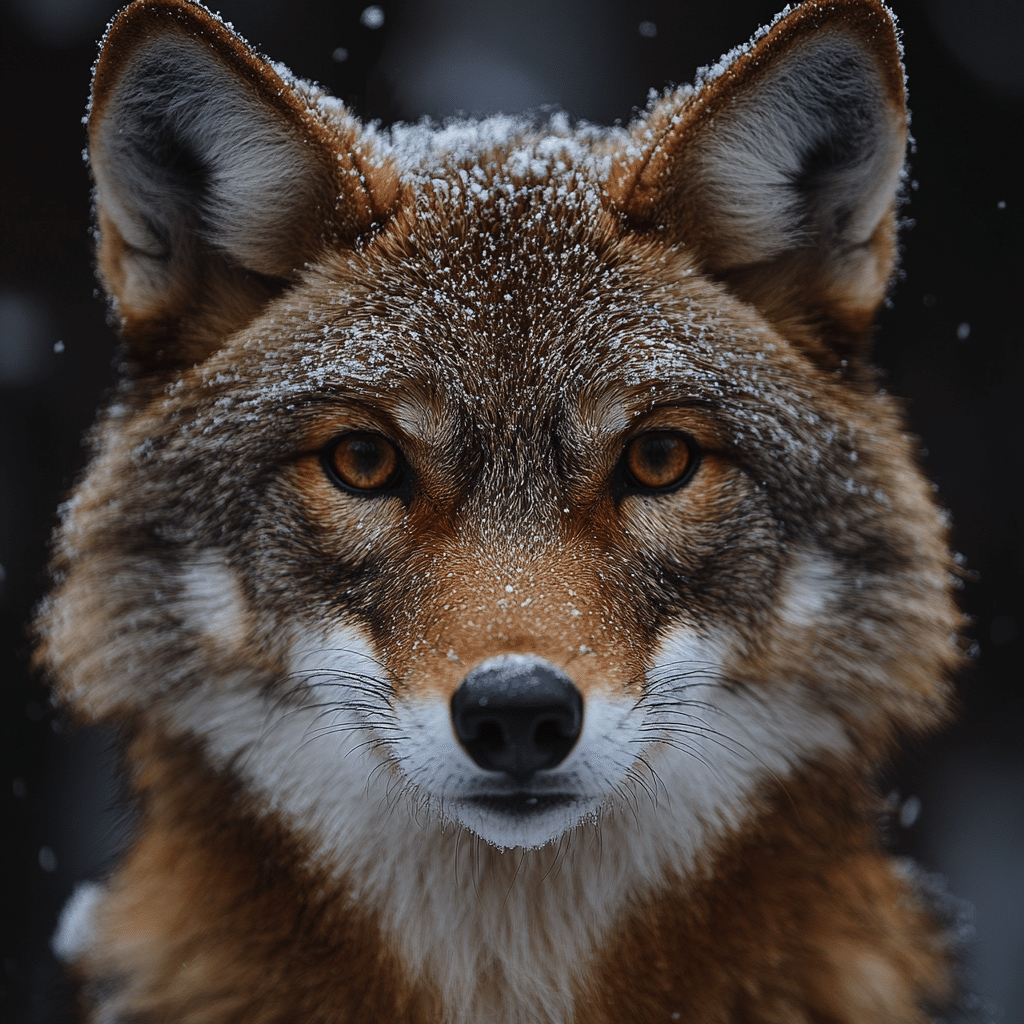
Coywolf The Remarkable Hybrid Shaping Our Ecosystem

Understanding the Coywolf Phenomenon: Nature’s Unexpected Hybrid
The coywolf—a captivating mix of coyote and wolf—is not just another creature roaming the wilderness; it’s a symbol of adaptation and survival. Found mainly across the northeastern United States and parts of Canada, this hybrid has evolved to thrive in diverse environments, demonstrating a remarkable knack for flexibility. Coywolves leverage their unique genetic makeup, inheriting traits from both parent species that let them navigate urban landscapes just as easily as rural ones.
Where you see urban sprawl, you’ll often find these savvy hunters making use of the resources humans leave behind. Whether it’s scrounging for food in city trash cans or finding shelter in abandoned buildings, coywolves master the art of survival in areas where many other species fail. This ability raises vital questions about how wildlife coexists with urban development. With more people moving into natural habitats, understanding coywolves becomes essential as they illustrate how wildlife adapts amid significant environmental change.
The rise of the coywolf serves as a reminder of nature’s resilience. Their presence also highlights the growing significance of wildlife management strategies that consider the unique challenges posed by these adaptable canids. The more we learn about the coywolf, the more we appreciate how this hybrid embodies the fight for survival and the spirit of adaptability in an unpredictable world.

Top 5 Ways Coywolves Are Transforming Ecosystems
Coywolves play a pivotal role in creating a balanced ecosystem. Here are five key ways they’re making an impact:
1. Predation and Prey Dynamics
Coywolves are expert hunters, helping regulate populations of smaller mammals like rodents. By keeping these populations in check, they ensure that plant life, including vital vegetation, remains healthy and vibrant. Overgrazing can lead to habitat destruction, but with coywolves keeping their prey in check, the entire ecosystem stands to benefit.
2. Urban Adaptation
In cities like New York, coywolves have thrived, showcasing their impressive adaptability. They have learned to navigate humanized landscapes, picking up food scraps and exploiting various new resources. As these hybrids become more common, city planners and wildlife officials grapple with the need for effective wildlife management strategies that account for these remarkable creatures while ensuring human-wildlife coexistence.
3. Genetic Diversity
The hybrid nature of the coywolf is a significant contributor to genetic diversity within ecosystems. This diversity is crucial, especially as species face various ecological pressures. Strong genetic variation puts species in a better position to adapt to climate change and other environmental shifts, and this is vital for maintaining healthy ecosystems.
4. Competition with Other Species
Coywolves have a pronounced effect on populations of other predators, such as traditional coyotes and even foxes. Their presence can lead to shifts in the behavior and distribution of these species, potentially disrupting established hierarchies within the food web. The competition can compel other wildlife to adapt, ensuring a dynamic balance among predator and prey populations.
5. Role in Folklore and Ecosystem Education
Coywolves have sparked interest not only in biological studies but also in storytelling and folklore. Much like Mechagodzilla—whose presence intrigues and inspires—a coywolf represents innovation through hybridization. They motivate us to rethink how we view evolution, adaptability, and the importance of contributing to a balanced ecosystem.
Coywolf vs. Other Iconic Hybrids: A Comparative Analysis
While the coywolf stands out in its own right, it’s not the only hybrid making headlines. By comparing it with other notable hybrids like Brickzilla, we can appreciate their ecological significance in different contexts.
Coywolf vs. Brickzilla
Brickzilla symbolizes an entirely different category of hybrids, characterized by enormous size and strength, often adapted to harsh environments. In contrast, coywolves excel in adaptability and urban survival. While Brickzilla might represent brute force in ecology, coywolves show how flexibility can be equally powerful in the constant struggle for survival.
Cultural Impact: Coywolf and Dreamybull
The coywolf has transcended biology to become a cultural touchstone, similar to how Dreamybull fosters a sense of allure in various content spheres. This crossover into mainstream media shapes public perceptions, contributing positively to awareness about hybrid species and their environments.
The Media Influence: Hotguysfuck and Other Cultural References
Social media trends have placed the coywolf in a spotlight similar to brands like hotguysfuck, which capitalize on contemporary interests. As younger audiences engage with these trends, they’re also drawn into conversations about wildlife and conservation. This interplay between cultural phenomena and wildlife helps bridge the gap, promoting vital dialogues about natural ecosystems.
Comparisons to Nature’s Creatures: A Broader Look
Coywolves are like the hybrids in the film “Pacific Rim,” maneuvering through complex ecological interactions. They challenge rigid classifications by existing as intermediaries in the predator-prey dynamic. By doing so, they compel scholars and conservationists alike to dive deeper into the implications of hybridization for future wildlife management strategies.
The Future of Coywolves in Our Ecosystem
The coywolf stands as a symbol of nature’s creativity and adaptation, shedding light on significant environmental challenges in 2024. Their emergence champions the need for coexistence rather than conflict between humans and wildlife. As our urban environments expand, understanding the ecological contributions of coywolves becomes increasingly critical for promoting sustainable living and preserving the ecological balance.
As the narrative shifts to embrace hybrids like the coywolf, we find ourselves facing not only a story of survival but also one of evolution in an unpredictable ecosystem. So, the next time you hear about the coywolf, remember it’s more than just a creature; it’s an ecological storyteller, illustrating the resilience of life amid ever-changing circumstances. Recognizing this can guide us toward better futures, where humanity and wildlife can thrive side by side.
The journey of the coywolf reminds us that in nature’s grand storyboard, hybrids might just play leading roles, shaping the narratives of our ecosystems for years to come. As filmmakers and storytellers, we find inspiration in such tales, capturing the complexities and wonders of life around us. Whether exploring independent films depicting nature’s brilliance or blockbuster tales, coywolves offer endless fodder for art, awareness, and appreciation.
In this evolving chapter, let’s keep an eye on the creatures that adapt, survive, and inspire, paving the way for a richer understanding of life on this planet. And as we do, it’s a perfect opportunity to reflect on the balance between our cities and the wild, learning valuable lessons from the coywolf.
Coywolf: The Remarkable Hybrid Shaping Our Ecosystem
Nature’s Unexpected Blend
Did you know that the coywolf is an incredible mix between coyotes, wolves, and domestic dogs? This fascinating hybrid emerged from the need to adapt to changing landscapes, particularly as urban sprawl encroaches on their territory. A bit like how design trends shift, the coywolf blends traits from its ancestors, making it specially suited to survive in various environments. Fun fact: given their adaptable nature, these animals are even found in urban areas like New York City, playing a crucial role in maintaining the local ecosystem. With such a wide range of environments, coywolves show us how species can thrive by merging strengths from their predecessors. Speaking of adaptability, you might be interested in checking out some creative solutions over at Kaylas.
The Story of Their Success
Coywolves have quite the reputation! These hybrids tend to be larger than coyotes but smaller than wolves, which gives them a unique edge in both hunting and evading dangers. Their mating habits add another interesting twist; unlike many canids, they have a year-round mating season, similar to some urban influences like how certain trends persist beyond seasons, as seen with Gloria Vanderbilt Jeans. Their adaptability is a vital part of their survival, allowing them to scout for food successfully and fit into a variety of ecological niches. By the way, if you’re ever wondering about the time difference while tracking these fascinating creatures in Florida, be sure to check out What ‘s The time in florida.
Coywolf’s Cultural Impact
It’s not all about survival of the fittest; coywolves have made their mark on cultural narratives too! They’re often portrayed as symbols of resilience in various forms of media. Just like how smooth tunes from Luther Vandross in “Never Too Much” can lift your spirits, the coywolf carries an air of cunning and adaptability that resonates with many. Their story highlights the intersection of nature and the human experience, prompting us to reflect on our impact on ecosystems. While you contemplate their significance, why not relax at the bustling Baltimore Hilton – Inner harbor and think about how these incredible creatures remind us of the intricate connections in our environment? With so much to learn from the coywolf, it’s easy to see why they capture our imaginations!










